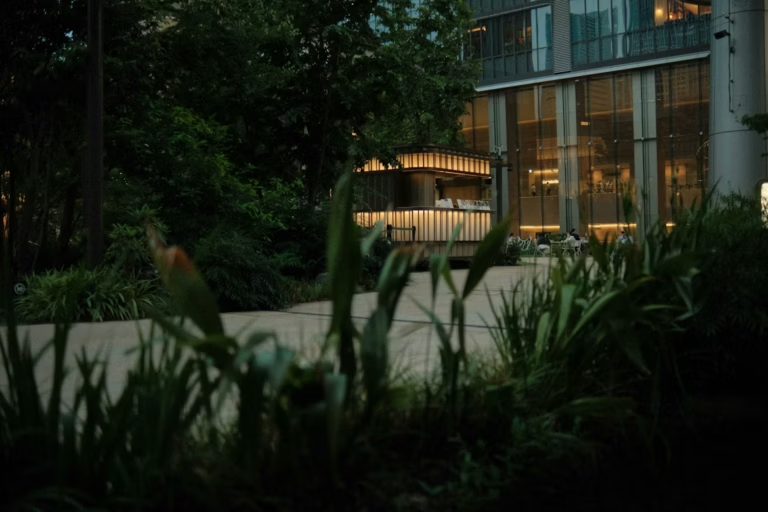Creating safe environments isn’t just about surveillance or security patrols—it starts with the way a space is designed. Crime Prevention by Environmental Design, commonly known as CPTED, is a proactive strategy that aims to reduce crime by influencing how physical spaces are planned and used.
CPTED is based on a simple yet powerful idea: when spaces are designed to promote visibility, control access, and support positive behaviour, they naturally deter criminal activity and improve community safety.
At Smartsec Security Solutions, we use CPTED as a core component of our crime prevention and security consulting services, helping councils, schools, property managers, and businesses across Australia create safer, more functional environments.
What Is Crime Prevention by Environmental Design?
Crime Prevention by Environmental Design is a multi-disciplinary approach that uses urban planning, architecture, landscaping, and management strategies to reduce the opportunity for crime. The concept originated in the 1970s and has since become a recognised best practice across Australia and globally.
Rather than relying solely on reactive measures like alarms or police presence, CPTED focuses on creating conditions that discourage criminal behaviour from occurring in the first place.
The Four Core Principles of CPTED
CPTED strategies are built around four foundational principles. When applied effectively, they can dramatically improve the safety and usability of both public and private spaces.
Natural Surveillance
Encouraging visibility and increasing the chances of being seen discourages criminal acts. Key design strategies include:
- Maximising lines of sight by avoiding tall hedges or solid fences
- Using windows, balconies, or seating areas to promote passive observation
- Installing appropriate lighting in carparks, laneways, and entry points
- Eliminating dark corners, blind spots, and hiding places
Natural surveillance improves the perception of safety and makes it more difficult for offenders to act without being noticed.
Natural Access Control
Guiding the movement of people through a space helps manage how individuals enter, navigate, and exit. This is achieved through:
- Defined pathways, fences, and entry points
- Strategic placement of gates, doors, and signage
- Designing layouts that make it difficult to access restricted areas
- Using landscaping to subtly influence movement and discourage shortcuts
Effective access control reduces the risk of trespassing, theft, and unauthorised behaviour.
Territorial Reinforcement
Creating a sense of ownership and responsibility over a space makes it more likely to be cared for—and less likely to attract crime. This involves:
- Clearly marking boundaries between public, semi-public, and private areas
- Using design features like paving, plant beds, or bollards to define spaces
- Encouraging community use and activity in shared spaces
- Incorporating artwork, signage, or branding to increase engagement
When people feel connected to a space, they’re more likely to protect it and report suspicious activity.
Maintenance and Management
A well-maintained environment sends a strong message: this place is looked after and monitored. Poor upkeep, on the other hand, signals neglect and invites crime. CPTED promotes:
- Regular maintenance of landscaping, lighting, and infrastructure
- Prompt removal of graffiti and rubbish
- Upkeep of signage, paintwork, and structural elements
- Clear lines of responsibility for managing the space
Good maintenance also supports the other CPTED principles by ensuring visibility and access control features are preserved.
Where CPTED Is Commonly Applied
CPTED can be applied to a wide range of environments, including:
- Parks and public open spaces
- Schools and educational campuses
- Shopping centres and commercial precincts
- Multi-residential housing complexes
- Laneways, pedestrian corridors, and transport hubs
- Community centres, libraries, and youth spaces
Whether applied during the design phase of a new development or retrofitted into an existing site, CPTED strategies can have a measurable impact on crime reduction and community wellbeing.
Benefits of Crime Prevention by Environmental Design
Organisations and communities that implement CPTED strategies often see benefits such as:
- Reduced incidents of vandalism, theft, and anti-social behaviour
- Improved community perception of safety and amenity
- Increased use of public spaces and community facilities
- Greater property value and investment attractiveness
- Lower maintenance and security costs over time
By addressing the causes of crime rather than just the symptoms, CPTED provides a sustainable approach to safety that benefits everyone who uses the space.
Common CPTED Mistakes to Avoid
While CPTED is effective, poor implementation can undermine its value. Mistakes to avoid include:
- Installing CCTV without considering lighting or blind spots
- Using solid fencing that blocks sightlines instead of open fencing
- Allowing overgrown vegetation to obscure key areas
- Failing to maintain spaces after improvements have been made
- Overdesigning controls that restrict legitimate users or cause confusion
CPTED must be balanced—it should deter crime without making a space feel hostile, closed off, or uncomfortable for everyday users.
How Smartsec Security Solutions Can Help
At Smartsec Security Solutions, we specialise in applying CPTED principles through practical assessments and design reviews. Our services include:
- On-site CPTED audits and photographic assessments
- Risk-based recommendations for public, commercial, or educational spaces
- Integration of CPTED with broader security risk assessments
- Collaboration with architects, planners, and councils
- Detailed reporting aligned with ISO 31000 and Australian CPTED guidelines
We work closely with stakeholders to ensure that CPTED strategies are realistic, cost-effective, and aligned with community needs.
Start Designing Safer Spaces with CPTED
Creating safer, more welcoming spaces starts with good design. Crime Prevention by Environmental Design offers a proven framework to reduce risks, improve functionality, and support long-term safety outcomes for your community or business.
To learn more about CPTED or to book an environmental crime prevention assessment, visit our Security Consulting Services page.



